Usually, the first big decision you have to make with your dog is when to spay or neuter dogs – it’s a big one too because there is an effect on their behaviour.
That’s such a tough thing to understand as a dog parent when you want to be responsible but understanding the behavioral benefits or potential behavior problems that may happen as a consequence of choosing to spay or neuter your dog – which is a big thing to a responsible pet owners.
And spaying and neutering are exactly that. With dozens of variables, it’s really hard to know what to do, what the best way is, what to consider and what to rely on – and ultimately what effects it can have on your dog. Then, when everyone has an opinion on what age you should get it done, what happened to them, and the suggestions of months of age – or even years of age.
I’m a thorough believer in giving you guys the very best data to make your own decision, because this has an impact of life expectency, pet overpopulation, and a number of common cancers. So, I wanted to give you wonderful dog owners my stance as a trainer, and I know it’s one that a lot of trainers and behaviourists I know share.
Before I get into it, I do have a little housekeeping to do, just in case this is the first thing you’ve read and it’s your initial point of research.
What Is A Spay?
Similarly to neutering, spaying is a form of surgical procedure, a ‘castration’ that removes the ovaries and most often the fallopian tubes along with it. This means your girl cannot breed, but it also means she is missing some critical hormones.
This process can be done in a ‘keyhole’ surgery at extra cost, though it is much better for recovery times.
What Is A Neuter?
This is the surgical castration of a male dog – usually by the surgical removal of the testicles (sorry for making you cringe, gents!).
This process means that your male dog cannot breed and that they are no longer producing hormones that are important to your dogs’ development – both emotionally and physically.
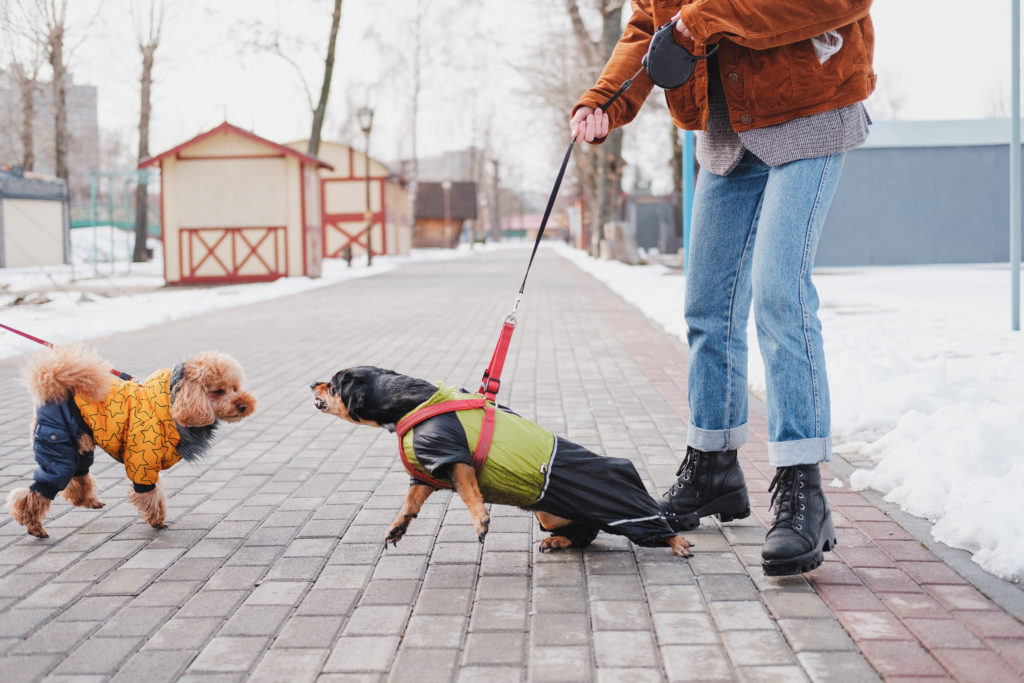
Does Spaying & Neutering Effect Behaviour?
Yes. But it’s very specific.
It’s categorically not a curall for all unwanted behaviors.
Spaying and neutering effects only sexual behaviors in our dogs that develop at or around sexual maturity, which means:
- Urine marking
- Sexual humping (not excitement based!)
- Intact males roaming to find female dogs in heat
- “Heats” or “seasons” and flirtatious behaviour in intact females
Other undesirable behaviors are likely to remain unchanged in spayed or neutered dogs vs intact dogs, so behavioural problems like nervousness, aggressive behavior, general anxiety, separation anxiety or reactivity will not be affected and actually the process (not the surgery!) can impact their behaviour in a negative way.
The significant difference is pretty much solely their ability to reproduce, and it does come with a few medical benefits such as eliminating the risks of mammary cancer (breast cancer) and testicular cancer or even prostate cancer – depending on the procedure you choose.
What about what the vet says about the effect on behaviour?
Vets typically say it can affect the following:
- Aggression
- Weight gain
And whilst this is true, it’s not consistent (or is anecdotal, or anchored in environmental factors in the case of weight gain) to what I’ve seen and I don’t believe that this is caused by the actual surgical process – and studies show similar shown by the dissimilarity of results.
Then you have the problem of everyone holding an opinion when their dog “changes” after surgery.
“Due to the lack of unequivocal scientific evidence, gonadectomy’s effects on dogs’ behavior are still debated.“
Palestrini C et al, Influence of Gonadectomy on Canine Behavior.
Luckily, I touch the lives of a lot of dogs, stay up to date with them, and often help ‘remedy’ issues that arise after a gonadectomy (a spay or neuter surgery) – whilst I will note that these are only theories that they are theories that I and a number of other trainers who I hold in high regard have come to similar conclusions on, without discussion.
Which leads me to believe that the theory is pretty sound.
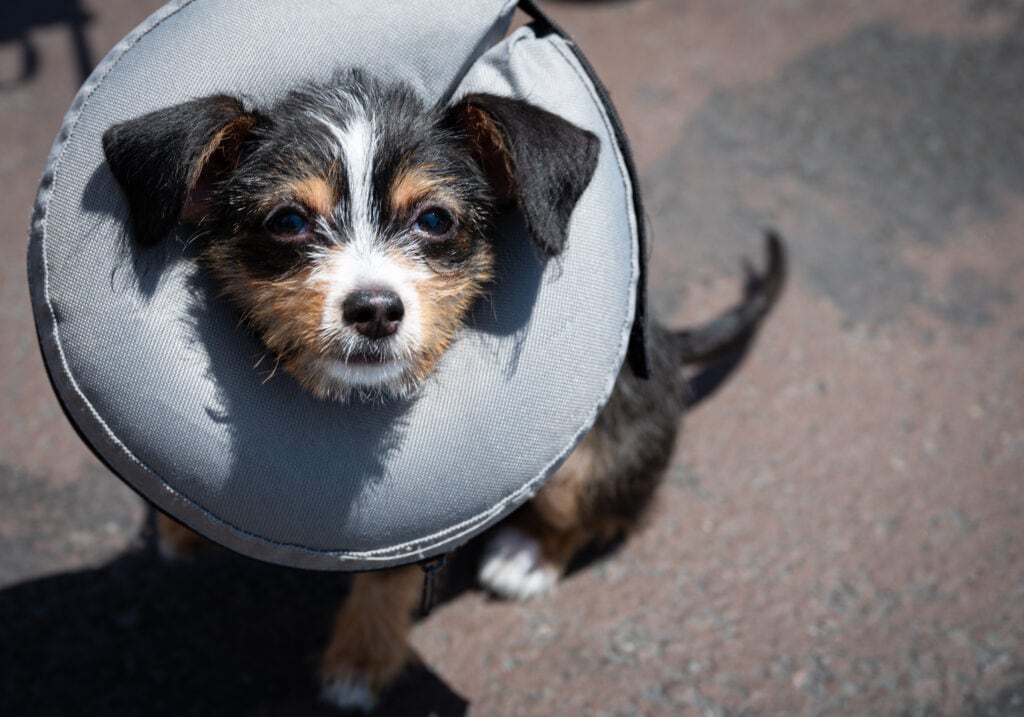
My working theory
There are a number of things that make spaying and neutering complex, from breed (e.g. german shepherds are different to golden retrievers and they again different to labrador retrievers, per data from Dr. Hart), to health problems, to genetic factors, and then to behaviour. Then within behaviour we have a series of complex phases, changes, and demands on our dogs, and then the consequences of spaying and neutering and the rest and reintroduction that impacts.
So let’s discuss this!
1 – Second Fear Phase
From the age of six to eighteen months is something called the Second Fear Phase. This phase is really important in your dog’s development – and happens to be where the ‘traditional age’ to spay or neuter is rooted right in.
This is the culmination of all your puppy training, and it’s also where any mild insecurities manifest, it’s also where some biological factors are most likely to take a dramatic turn.
This phase is often the phase in which dogs get neutered or spayed, and the trauma (a word used lightly) and after-effects of this surgery are really impactful, and doubly impactful when your dog is in such an exaggerative part of their life.
Not to mention that we’re then removing developmental hormones (such as testosterone levels) that your dog may be relying upon – and it’s impossible to tell whether it will change things or not.
2 – The Surgery & Pain
The surgery is a process. It’s a pretty stressful thing when you consider your dog is taken away from you, usually for a significant amount of time, by a stranger, for likely the first time. Then taken into a weird space that smells funky, and crated until their surgery is up. Knocked out and sent back to you feeling super groggy and weird.
The surgery then causes pain.
Our dogs are not great at showing pain, or understanding pain. And beyond their teething, this is likely the worst pain they’ve gone through in their young lives. Which is hugely impactful!
Not to mention that they’re now being asked to do things, like resocialise (see later!) whilst potentially in pain.
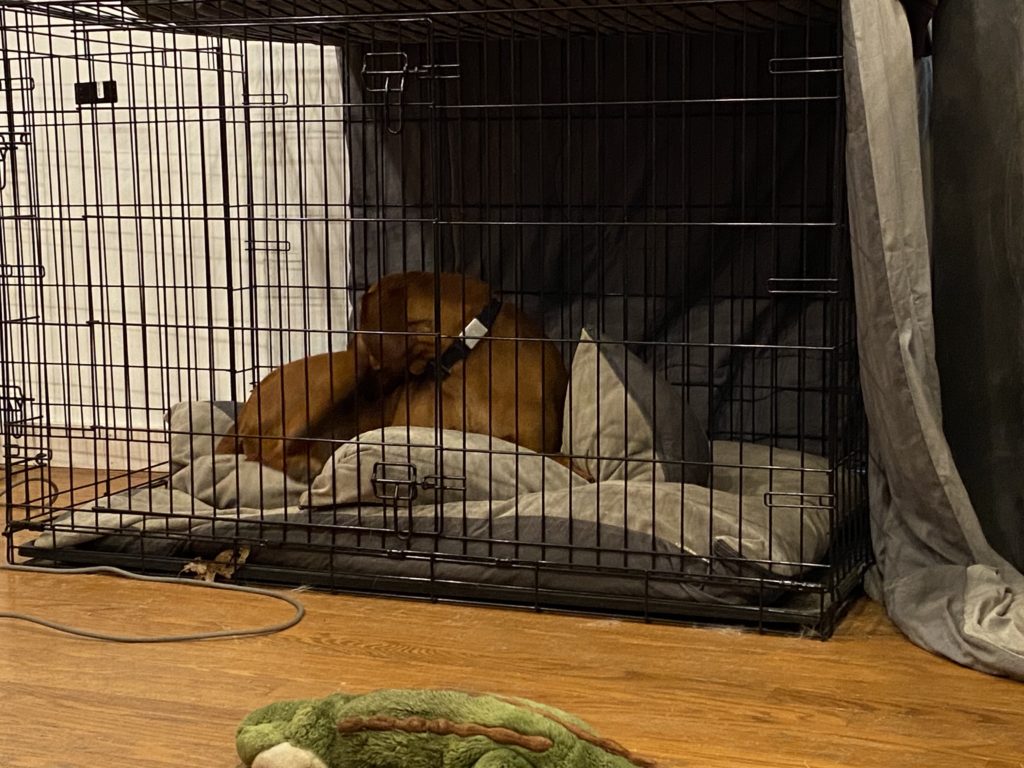
3 – The Recovery
This is actually the phase where most dogs learn calmness.
A lot of the time this is something we neglect within puppy training. And a spay or neuter surgery means forced rest and relaxation with the threat of tearing stitches and the awkwardness of the cone of shame.
Consequently, the recovery is where your dog learns calmness – not necessarily as a direct result of the surgery, but as a domino effect behaviour.
The same can be said for the “lessening of leash pulling” seen in Influence of gonaedctomy on canine behaviour. Suddenly it becomes really important that our dogs don’t pull (particularly large-breed dogs), and additional training absolutely doesn’t count as a consequence of a spay/neuter surgery.
And then Seperation anxiety, suddenly our dogs are being left home alone without much exercise, or similar, and it means that they can feel more nervous or anxious, especially if in pain. Vulnerability comes to mind.
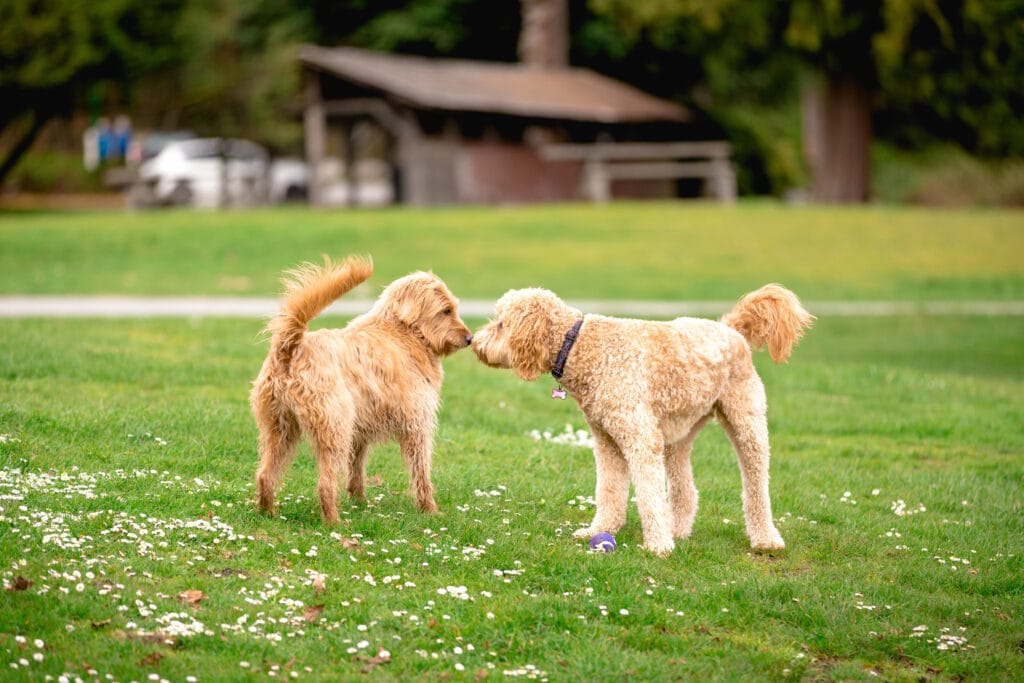
4 – Re-Socialisation
After pain, after time away from civilisation, we reintroduce our dogs and expect them to pick up exactly where they left off.
That doesn’t happen a lot.
Dogs can go in too hot, over excited and hurt themselves, this then means that they have learned that dogs used to mean good things, and now they mean bad things… And if that has the chance of repeating itself? Suddenly we get a sincere problem that can develop into reactivity.
The same can be said for going in too cautiously, or fearfully, or even just with a new dog who may play too rough. On this instance, we have to go back to carefully choosing socialisation opportunities, even if they happen at a distance.
Our dogs can develop a sensitivity, and consequently, they need to be brought back into the world with a little more gentle of a manner. So, it may be a good idea to give the dog park a miss.
So, What’s My Advice?
Your when is best is unique to your individual dog, and the more data you have the better. It’s not a decision you should make easily. Sure, we want to ensure that we do our part to prevent unplanned or unwanted litters, but we must also do what is best for our dogs.
Consequently, if your dog has behavioural issues, or is approaching a phase in their life where behavioural issues could become apparent, don’t go for the surgery. Resolve your dog’s behavioural issues before you consider surgery.
The best time to get this done, is when lives and behaviour is stable and positive.
This way you optimise your dogs ability to recover, achieve long-term health benefits and minimise the risks you’re taking with your dogs health, longevity and behaviour.
Does that make sense?
I feel like a lot of this is very understandable when broken down in this manner. So why the science is … not necessarily in place to support this? It’s a good question, I’m assuming it’s limitations of the scientific community, because all tests have their limitations.
If you want to discuss your dog’s surgery, recovery, want a canine behavioural assessment or what your options are? Feel free to get in touch! This would be a perfect discussion for a bark day!

Author, Ali Smith
Ali Smith is a professional, qualified, and multi-award winning trainer is the founder of rebarkable. She has always believed animals deserve kindness and champions force free methods. Believing that dog guardians will all choose the kindest options if proper information is provided, she aims to help all dog guardians who need it and make dog training as accessible as possible
Ali lives win Maryland, US with her husband and her three dogs.

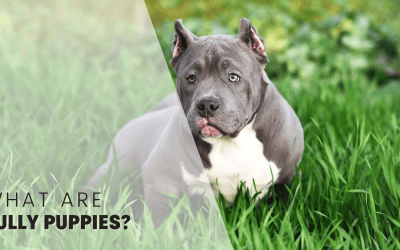

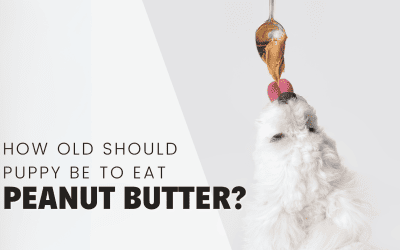
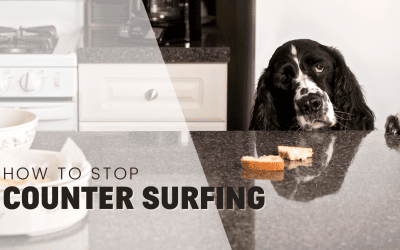

0 Comments